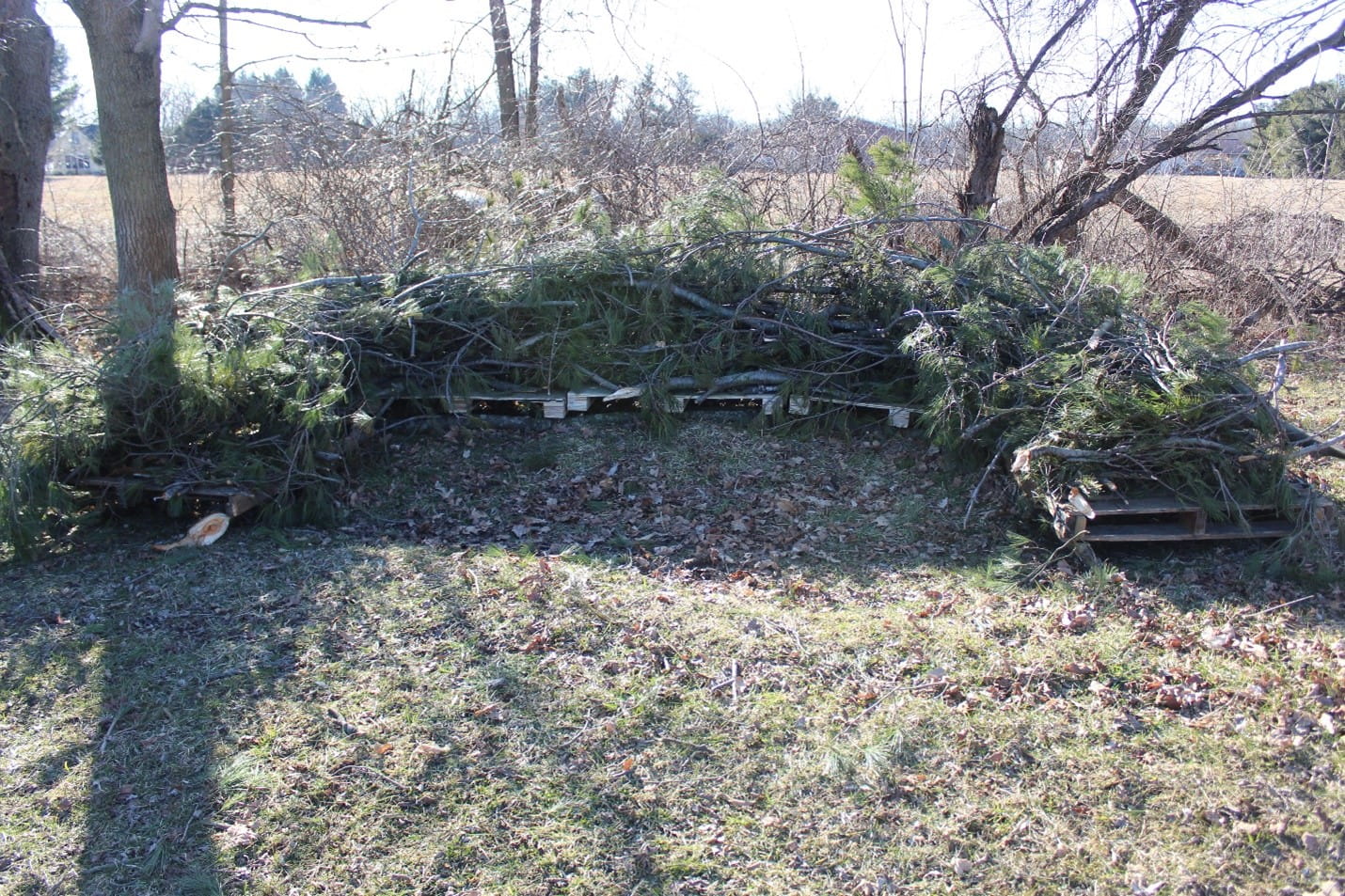The web Browser you are currently using is unsupported, and some features of this site may not work as intended. Please update to a modern browser such as Chrome, Firefox or Edge to experience all features Michigan.gov has to offer.
Turning storm damage into wildlife habitat
March 22, 2023
As part of Severe Weather Awareness Week in Michigan, MI Environment is featuring ways to turn storm debris such as downed branches into habitat for wildlife. Aaron Hiday, EGLE’s compost program coordinator, shares his thoughts.
In the wake of Michigan’s recent fickle weather, now it is time to start cleaning up the mess (or messes) left behind. But if you or someone you know has a lot of downed branches, you are probably wondering what to do with all of that debris. Some Michigan municipalities have curbside brush collection, but many more have drop-off brush collection areas. Check with your local municipality for more information to see what options may be available to you.

Brush pile made from storm debris to create a wildlife habitat.
However, there can be more creative options to utilize the materials left behind by the weather. For example, you may be able to utilize some of the wood for firewood (if appropriate, and after being properly seasoned and dried).
If you own property, know someone who does, or have a conservation/wildlife club nearby, you may be able to utilize the debris material to create habitat for wildlife.
Many of Michigan’s wild animals, including small mammals and birds can benefit from brush piles. They are not hard to construct and can put that unwanted brush waste to good use! Whether they are on the smaller side or a great big heap, a brush pile can help the diverse array of wildlife on your property.
Here’s how to do it:
After finding a suitable spot for the brush pile, start with the largest branches that you have for a “base layer” by placing them parallel to each other. The idea is to get the next layer at least 4 to 5 inches off the ground, so don’t be afraid to stack branches up or utilize natural features like downed logs, rocks, and uneven ground as part of your base layer to reach an adequate height. Once you have the base layer down, begin to lay more branches perpendicular to the base layer. (You could also use old, but clean "junk" pallets for this step instead.) This will create space underneath the pile for small animals like rabbits and squirrels to hide from predators. You can then begin to alternate the direction of the rest of your larger branches, for a few layers, to create a sturdy base structure on which to build the rest of the brush pile.

Pallets topped with storm debris to create a wildlife habitat.
Once the base is built, you can place smaller and thinner branches to start “covering” the pile. Any branches, limbs, and brush you have on hand can work, but brush collected from conifers (like pine, spruce, and cedar trees for example) tends to work best. You can even utilize live Christmas trees, provided there are no artificial decorations clinging to them. During this step and the rest of the build, make sure that you leave access to the space you created at the bottom in the previous step.
With a sturdy structure coming together, you are then free to build your brush pile(s) as large or as small as you want to benefit different species. Larger piles can provide cover/habitat for songbirds and other animals. If you have plenty of material to build brush piles of significant enough height and/or width, larger mammals like deer can use them for bedding, and upland birds like turkeys can utilize them for nesting habitat to help hide their eggs from predators.
So, whether you are still cleaning up from the latest Michigan weather or know that there will always be more to come, consider utilizing your downed storm branches and brush to help make habitat for Michigan’s wildlife.